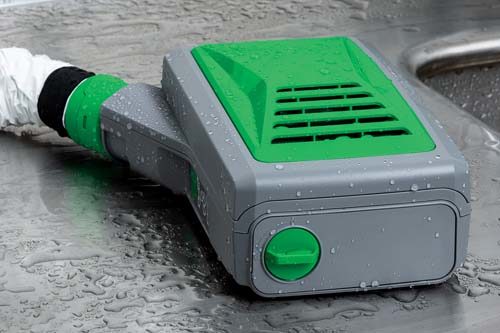Respiratory protection in health care
How are powered air-purifying systems protecting frontline health care workers from COVID-19?

Responding is Jack Hartley, content specialist, RPB Safety, Royal Oak, MI.
Health care workers on the front line of the COVID-19 pandemic are placed under immense stress – exposed to volatile situations – and are known to suffer psychological trauma as a result of their work. Now, they’re faced with another health risk: being in direct contact with the coronavirus that causes COVID-19. Because the worst cases of the disease reach hospitals where medical intervention is needed, infected individuals who come into contact with health care workers are highly contagious and require a lot of assistance, which makes close contact inevitable. With global personal protective equipment supply shortages and the need for a greater level of protection, frontline health care workers searched for alternative forms of PPE and are now turning to powered air-purifying respirators.
Throughout the pandemic, health care workers have been disproportionately contracting COVID-19, which suggests the PPE being used has not been adequately protecting them. As the infection can spread by direct and indirect aerosol and droplet transmission, either entering the respiratory system or through moisture on the eyes, this shows that surgical masks/N95s, safety glasses and faceshields are not guaranteed protection. In terms of respiratory protection, these – at most – provide a filtration efficiency down to 0.3 microns.
With COVID-19 being only 0.12 microns, clearly these forms of protection cannot be relied on to protect those on the front lines.
The introduction of PAPRs has completely changed the way health care workers experience health and safety in their environment. These systems combine with a loose-fitting headtop to bring the user clean, filtered air – and have the ability to remove particulates down to 0.12 microns. Through the air being supplied to the user, positive pressure is created, which further prevents external contaminants from entering the user’s breathing area and removes the need for a tight seal.
Because PPE is largely based off male facial and body features, there’s a one-size-fits-all approach that simply does not work. In particular, this is seen with tight-fitting respiratory protection.
However, with a large majority of the health care industry being female, many people are wearing protection that is not designed for them and will not fit them. Loose-fitting respirators have removed this barrier and helped to ensure every user receives the same consistent level of respiratory protection through customizable sizing – no matter their gender and facial shape or features.
One of the greatest ways PAPRs have helped to protect health care workers is in the workers’ knowledge that they are going home from their work free of COVID-19 and safely back to their loved ones.
In a time when there is so much uncertainty with a battle that might seem endless, simply knowing that when you put on your PPE, you are actually protected from an environment that is able to cause so much devastation means the world. Having this control and knowledge is very powerful for health care workers and lets them focus on what’s really important to them – helping care for the lives of the people in their communities.
We continue to learn about COVID-19 every day, and throughout all of this, one of the greatest discoveries has been learning how to properly protect those who are protecting us.
Editor's note: This article represents the independent views of the author and should not be construed as a National Safety Council endorsement.
Post a comment to this article
Safety+Health welcomes comments that promote respectful dialogue. Please stay on topic. Comments that contain personal attacks, profanity or abusive language – or those aggressively promoting products or services – will be removed. We reserve the right to determine which comments violate our comment policy. (Anonymous comments are welcome; merely skip the “name” field in the comment box. An email address is required but will not be included with your comment.)

